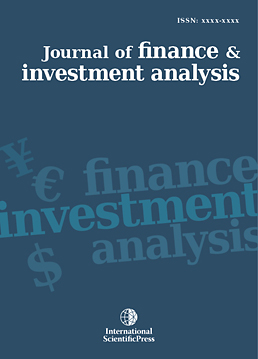Journal of Finance and Investment Analysis
Determining Impacts on Non-Performing Loan Ratio in Turkey
-
 [ Download ]
[ Download ]
- Times downloaded: 13890
Abstract
Banking sector is an essential part of a nation's economy and represents one of the most important components of a nation's capital. Similarly, the loan portfolio represents an important component of a bank’s total assets. These assets generate huge interest income which is a critical measure of the bank’s financial performance and stability. Therefore, the non-performing loan ratio is a critical tool to measure a bank’s performance. There is recently a growing recognition between macroeconomic indicators, bank-level factors and the non-performing loans (NPLs) ratio. The purpose of this study is to investigate whether there is a significant relationship between macroeconomic indicators, bank-level factors and non-performing loan ratio in Turkey. In this study linear regression models and cointegration analysis are utilized to determine the significant relations between the periods from January 2007 to March 2013. Our empirical results show that debt ratio, loan to asset ratio, real sector confidence index, consumer price index, EURO/ Turkish lira rate, USD/ Turkish lira rate, money supply change, interest rate, Turkey’s GDP growth, the Euro Zone’s GDP growth and volatility of the Standard & Poor’s 500 stock market index does not have significant effect to explain NPL ratio on multivariate perspective. On the other hand, industrial production index, Istanbul Stock Exchange 100 Index, inefficiency ratio of all banks negatively affect NPL ratio; unemployment rate, return on equity and capital adequacy ratio positively affect NPL ratio.
